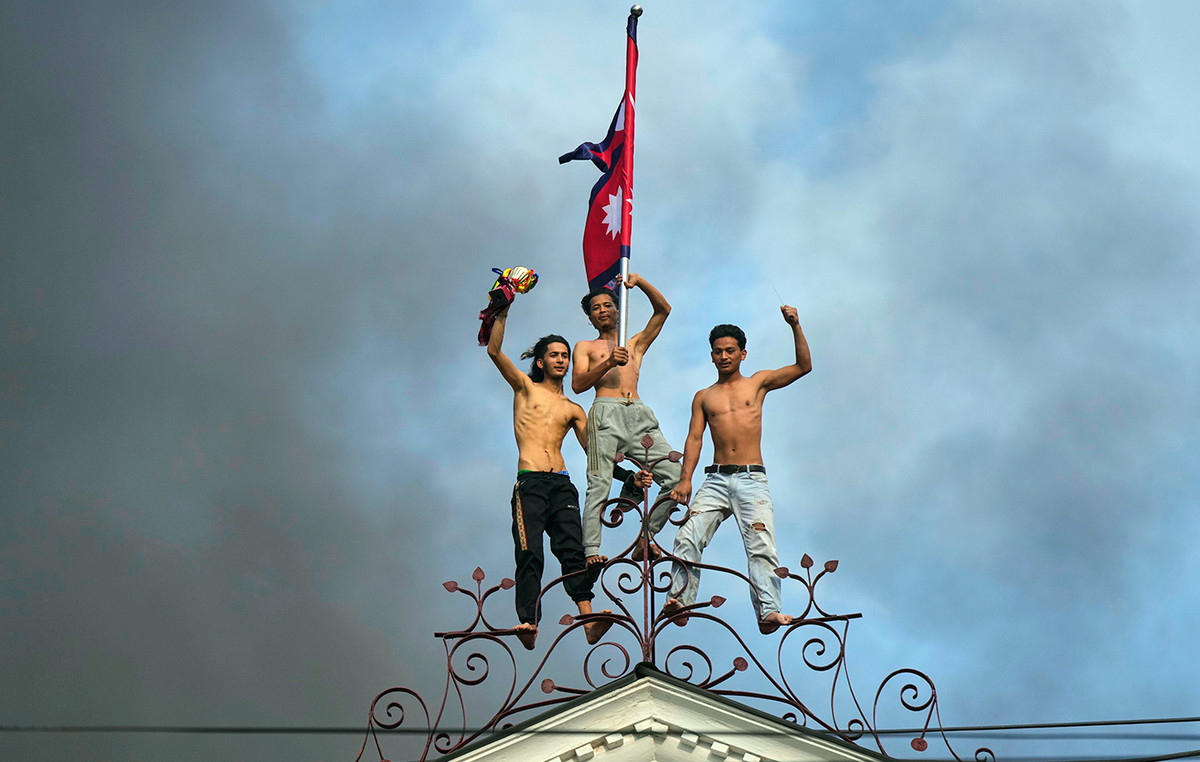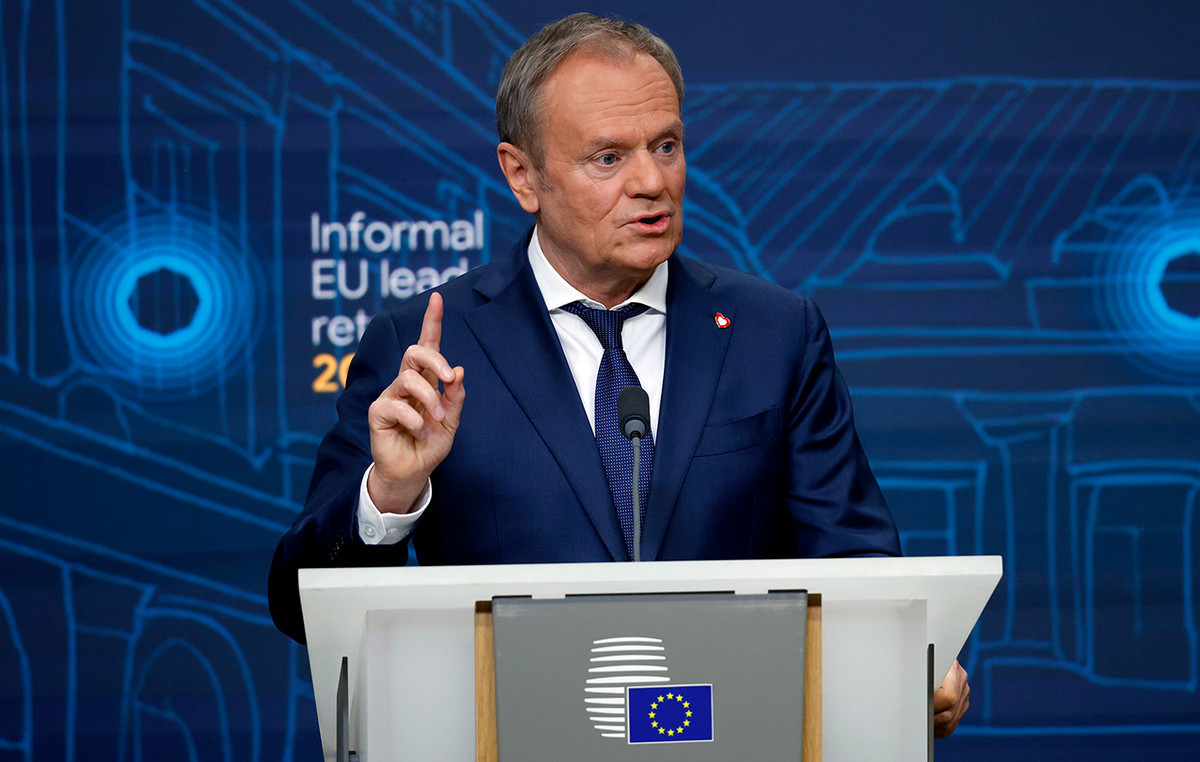The series of Russian attacks that hit Ukraine on Monday (10) made every city in the country feel much closer to war than they had for months.
At least 19 people died and dozens were injured in the missile strikes, which were supported by Iranian-made attack drones. Infrastructure was damaged and the homes of Ukrainians – before the winter period – were plunged into blackout. However, Ukrainian officials said about half of the 84 missiles were intercepted. Russian commentators suggested that 150 were launched, indicating that the damage could have been worse.
It was a different level of strength from Moscow, but perhaps not a radical change in its strategy – for two reasons:
drone stock
Firstly, they are unlikely to be able to sustain this type of dam over time. They have been firing missiles intermittently at targets week after week across Ukraine, which will have an impact on stockpiles. It is unclear how many drones they received from Iran, but this too is limited and a reflection of depleted stocks, not an excess. Monday may have been more an expression of military power than a long-term change in tactics.
It is important to remember that Moscow has had absolutely no reservations about hitting civilian targets or infrastructure since the beginning of the war.
In the week before Monday’s attacks, the city of Zaporizhzhia was repeatedly hit by missiles, which exploded into apartment buildings, killing and injuring dozens of civilians.
At the beginning of the war, a maternity hospital and a theater-turned-shelter marked with the words “CHILDREN” in Mariupol were hit. Monday was not a sudden shift in Russia’s moral compass. They just did the same thing they did during the war on a bigger and wider scale.
Lots of Missiles for ‘Little’ Destruction
Second, the tactic didn’t really work. For the volume of cruise missiles spent, the damage to Ukraine’s infrastructure was far from catastrophic. Kiev faced terrifying scenes of crowded rush-hour streets being hit — along with playgrounds and parks — and a terror it hadn’t seen in months.
The net effect of the day Ukrainians hid in bomb shelters was some damage to power infrastructure and loss of civilian life, but also a promise from the White House to provide the advanced air defenses Kiev has been begging for for more than months.
In a place that CNN visited in Dnipro, where two expensive cruise missiles hit an abandoned telecommunications building and a civilian bus, causing a huge crater, the road had already been paved on Tuesday morning, according to images posted by residents. Not even the damage was permanent.
So what was the point? The message Moscow sent to Ukraine was not a big change from the past seven months of carnage. He spread the war back to the Ukrainian cities that felt safer. But again it united Ukraine’s allies and accelerated the air defenses Kiev needs.
The message you sent was likely only successful in one direction: internally.
Vladimir Putin has been under intense pressure, suffering from rare open dissent and criticism of the conduct of the war for weeks since the disastrous execution of a partial mobilization suddenly dragged tens of thousands of Russian families into the war.
Its troops are retreating on three separate fronts, failing to resupply, and at greatest risk the Kerch Bridge, which links the mainland to Crimea, has proven to be highly vulnerable and has been seriously damaged. The calls to “do something” were deafening.
And after three hours of sheer terror across Ukraine, “something” was done. Critics who were shocked to talk about the war – such as Chechen leader Ramzan Kadyrov – were suddenly pleased with the war’s progress. Kremlin spokespeople celebrated the strikes on social media.
It was ugly, but they felt they had finally inspired a fear that Moscow had not been able to conjure in weeks. Fear is an essential part of Russia’s military strategy, which has made its low-cost military seem almost omnipotent over the past decade. Without it, they’re stuck dealing with insufficient fuel supplies, terrified frontline recruits, and a lack of potent strategy.
Interception of missiles fired by Ukraine
But will it work again or will it become part of your regular tactics? Probably not.
Ukraine’s air defenses appeared to be doing a reasonable job on Tuesday, intercepting more Russian missiles. Western aid will likely improve this effectiveness in the coming weeks. Russia proved incapable of hitting targets with great precision, sometimes missing or not really knowing what it was hitting, as we saw before.
The effect of the strikes on Moscow’s domestic public is also likely to be short-lived. They are still losing territory and troops on the front lines. They still cannot properly equip those they forced to fight. These are problems that will be felt in more and more Russian homes in the wake of the brief moment of brutal potency these attacks provided.
The new Russian offensive marks a loud and savage shift in tone by Russia’s new commander – Sergei Surovikin – a man whose career has been marked by the indiscriminate bombing of Syrian civilians and Russia’s brutal second Chechen war. Perhaps it’s a punctuation moment in a long chapter of failure, or it’s simply used to herald his arrival.
However, Russia is unlikely to have the inventory to repeat this Monday’s horror — or the intelligence to make it as effective as it is expensive. Even in his announcement, Putin’s threats were less strident: he said future attacks would be met with a response that would match the threat facing Russia. There was no nuclear bombing and no promise to continue the attack independently.
Even in his brief moment of inflicting terror across Ukraine, Putin spoke of a position of growing weakness, this time with dozens fewer cruise missiles in his stockpile.
Source: CNN Brasil
I’m James Harper, a highly experienced and accomplished news writer for World Stock Market. I have been writing in the Politics section of the website for over five years, providing readers with up-to-date and insightful information about current events in politics. My work is widely read and respected by many industry professionals as well as laymen.







